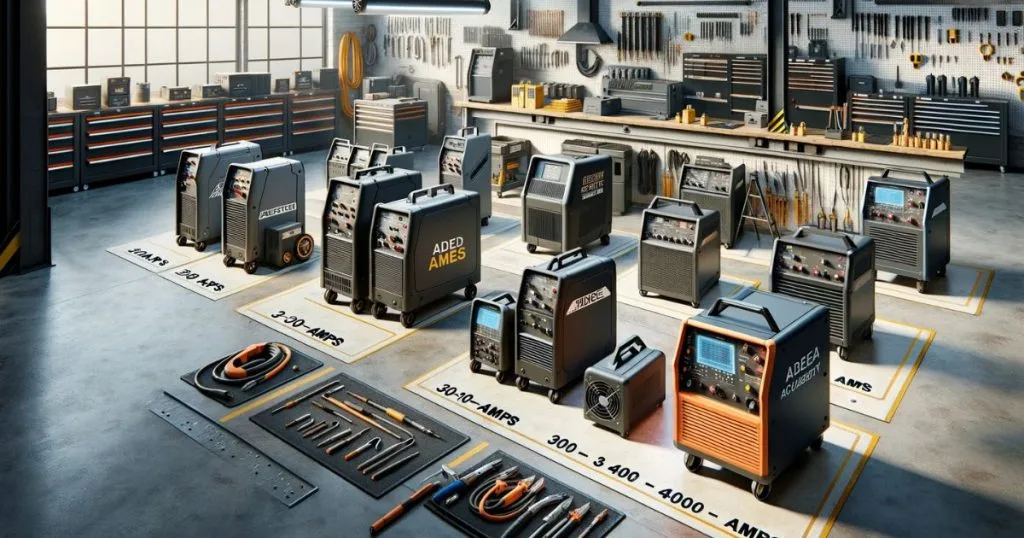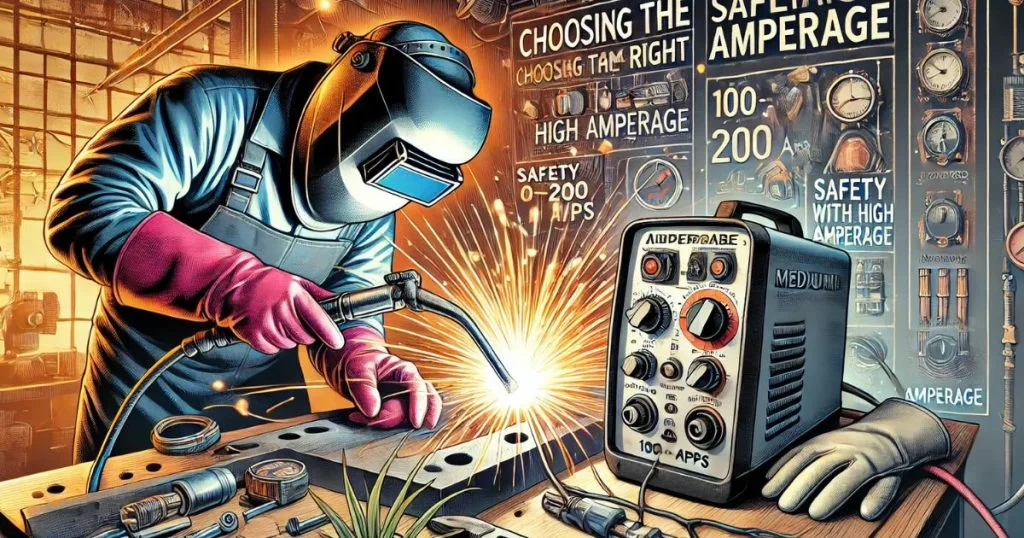When choosing a welder, consider the amps required for your welding projects. A 50-amp machine is ideal for heavy-duty tasks, while a 30-amp stick welder or MIG welder can suffice for lighter jobs. Ensure the breaker size matches the amp breaker to prevent tripping.
Welding inverters would need a power source of around 220V or 240V. A machine’s duty cycle indicates how long it can weld before it has to cool down. The better the amperage control of a welder, the more satisfactory it will perform when welding different kinds of electrodes, like 7018.
Understand amps vs. voltage and voltage drop. Ensure the welding leads and size of the wire are appropriate to get the maximum output. Good spot welding and short circuit MIG welding techniques include a thermal arc setting, its feed speed, and even hot start features.
Meta Title: Ideal Amperage of a Good Welding Machine | Expert Guide
Meta Description: Find out how many amps a good welding machine is in your projects. Learn to optimize your welding with the right amperage for an efficient and quality job.

Why Amperage Matters in Welding
One aspect of welding is amperage, as it has a direct relation with the welding current and how it would behave. For instance, using a stick machine at 30A or 50A could mean all the difference when keeping an arc stable while using an electrode of a certain type, such as 6013. It’s vital to be aware of this as a future welder.
It shall depend on whether the transformer welder is rated as 230V or 115V input, using a power factor and duty cycle to determine the type of wire to use and the kind of heat applied. A lighter work can require a 30A breaker, whereas thicker metal necessitates 125 amps.
The time, in minutes, a welder can run continuously in a 10-minute cycle without overheating is known as the duty cycle. This is affected by a lot of things, including circuit breaker ratings and sub-panel configurations. There are so many variables that an electrician has to take into consideration when setting up a MIG machine or TIG welder for particular tasks.
Arc force and larger diameter electrodes are usually required in most applications of stick welding. All weld operations are based on getting less heat and enough heat input so the load can be managed by the transformer.
Knowledge of Different Welding Processes
MIG Welding: Usually found between 30-300 amps. This process is versatile and handles both thin and thick materials.
- TIG Welding: 10–200 amps, very precise, and control welds best when working with thin metals and delicate work
- Stick Welding: 40-300 amps; it is best for heavy-duty work and outdoors because the metal is not necessarily clean.
- Each process has its own range of amps. So, the work you want to do is going to be your guide for a machine.

Some Common Welding Machines Amperage Ranges
Light Duty Machines: 30-100 amps; it is good for hobby people and small-scale repairs.
Medium-duty machines: 100-200 amps; very suitable for automotive repair and light fabrication.
Heavy-duty welding machines: 200-400 amps, perfect for industrial and construction work.
Now, understanding these ranges will give you the ability to determine which machine best suits your needs in order to finish the project.
Amperage for Different Materials
Steel: 90-180 amps, depending on the thickness of the steel.
Aluminum: 80-250 amps since it is a more conductive metal than any other.
Stainless Steel: Generally 100-200 amps.
When the amperage matches the material, you will have strong welds without defects and clean.
How to Choose the Right Amperage
The amperage that would be chosen must determine the material thickness and type of welding being done. Generally, 1 amp is used per 0.001 inch for the material’s thickness. This is a very good guideline as it does not overheat nor underpenetrate.
Amperage and Power Supply
Ensure that the power supply available is sufficient to run the machine. Home circuits are rated up to 200 amps, while industrial facilities often provide more amperage. The circuit will break or burn equipment if it exceeds its rating.
Portable vs. Industrial Welding Machines
Portable machines offer 200 amps. It is good for most fieldwork and repairs. Industrial machines reach up to 400 amps and are used in heavy-duty fabrication and manufacturing work.
Safety Feature with High Amperage
High amperage definitely brings the danger of electrical shock and burn. Safety gear has to be proper while working, and the workplace must be well ventilated. One should check frequently for worn-out and damaged equipment.
Cost Factor in High Amperage Machines
Normally, the higher amperage machines cost more but will balance this out with their capacity and durability.
Buying a machine that suits your needs saves you money because you won’t have to buy upgrades or additional machines.
Welding Machine Upgrade
You might want to change to a stronger amp machine when you feel that the one you are using is no longer strong enough for your task. This would enable you to work on varied projects.
How to Maintain Your Welding Machine
Maintenance helps in performance and longevity. After every use, you should clean your machine, inspect the cables, and ensure that all connections are tight and corrosion-free.
How to Troubleshoot Amperage Issues
If your machine is not performing as expected, check the settings, cables, and power supply. Sometimes, the problem could be as simple as a loose connection or a faulty cable.
Conclusion:
Amperage is also the most important selection to make when choosing the right welding machine. For the amateur and professional alike, it helps in deciding what welds most efficiently and well, making your project a success.
FAQs
1. What is the best amperage for welding mild steel?
Best amperage for welding of mild steel The best amperage for welding mild steel depends upon the thickness. The general amperage for most jobs would be between 90-180 amps.
2. Do I have to use a low-amperage machine, though the material is thick?
Thick materials require low amperage in the end penetration, and a weak weld will occur.